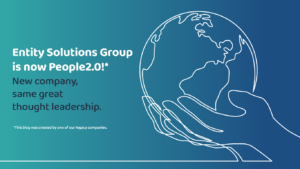Entity Solutions recently held a successful Roundtable event bringing together several business and industry leaders for a discussion forum about the challenges and opportunities associated with managing contingent workforce talent. Our decision to hold this event was based on a recent influx of interest from our valued customers who were seeking clarification around the topic.
Participants openly discussed the everyday challenges they faced in managing the reuse and retention of contingent talent and the ways in which their organisations were dealing with what can be considered uncharted territory.
Navigating our way through the New World of Work
Entity Solutions’ CEO Neil Merola initiated discussions by summarising the current working environment and the inevitable changes that are required as society moves into the era of the New World of Work (NWOW). The NWOW is not a new concept, however, organisations are facing challenges that they have never dealt with previously, and for which there is no precedent and/or no guidelines. With the nature of engagement rapidly heading towards assignment based work, more and more organisations are realising the importance of incorporating a contingent workforce into their workforce models, which means that processes and guidelines need to be put in place to ensure its success.
Neil said, “It is undeniable that workforces are increasingly moving toward project and assignment based engagements. Technology, globalisation, diversity, economic changes are some of the factors contributing to the shift. To accommodate the shift, access to talent cannot be limited. We see more organisations self-sourcing, placing greater emphasis via in-house recruitment capability, networks of their key personnel, referrals and augmented with specialist niche agencies.”
Why do organisations want to reassign contingent talent?
Each of the businesses participating in the Roundtable discussion identified two major drivers to reassigning their contingent talent. They are:
1. Cost Containment – When sourcing talent, the marketplace is competitive and speed is paramount. In order for the contingent workforce option to remain an economic alternative to employing permanent headcount, costs need to be contained in the ‘recruit to pay’ process and strategies set around talent management and retention.
2. Intellectual Property – When an individual is engaged on a contract, they are privy to valuable information and can become embedded in the intimate details of projects and technology. By retaining contractors familiar with the detail, organisations can increase productivity on similar pipeline projects.
What are the challenges to reassigning contingent talent?
In procurement and sourcing roles, it is vital to retain visibility of contractors during the various stages of their tenure in order for individuals to be considered for pipeline work. Panellists also agreed they would benefit from aligning retention strategies to organisational policy, goals, behaviours and culture.
• Visibility and mobility – The panel cited lack of an ideal system in place which allowed full visibility of permanent workers, assigned contingent workers and an available contingent talent pool as a major challenge
• Organisational policy – A lack of clarity around engagement types was common amongst the organisations and this lack of definition could be hindering the efficient management of contingent talent pools.
So what can organisations do to overcome the challenges?
With competition for niche skill sets on the rise in recent years, the organisations involved in the discussion were looking at implementing strategies around contingent talent attraction and retention, where previously it had not been of great concern due to the nature of the engagement type. The following three key areas were identified as being pivotal to the successful management and reuse of contingent talent pools:
• Workforce planning – Make the transition from regarding the contingent workforce with nonchalance, to incorporating this necessary element into a long term workforce plan.
• Investment in technology – The development or investment of a skills and calendar technology portal will centralise all information relating to your contractor workforce.
• Contractor experience – Creating an environment where contractors can develop an appreciation of your brand and culture will do a lot to enhance the contractor experience.
Embracing this next phase of the New World of Work will be crucial to making it work for your organisation and formulating solid strategies around your contingent workforce as with the permanent workforce.
Although the event was intended to be a critical thinking session, some clear trends and vital information emerged that all attendees could take away and utilise in their own contingent workforce strategies.
To find out more about our Roundtable discussion and the valuable insights gained, as well as our recommendations for how to best approach a solution to your organisation’s contingent talent pooling challenges, read our 2017 Whitepaper.

Infographic: Independent Contractor or Employee?
Discover basic differences between contractors and employees with People2.0’s infographic overview.


